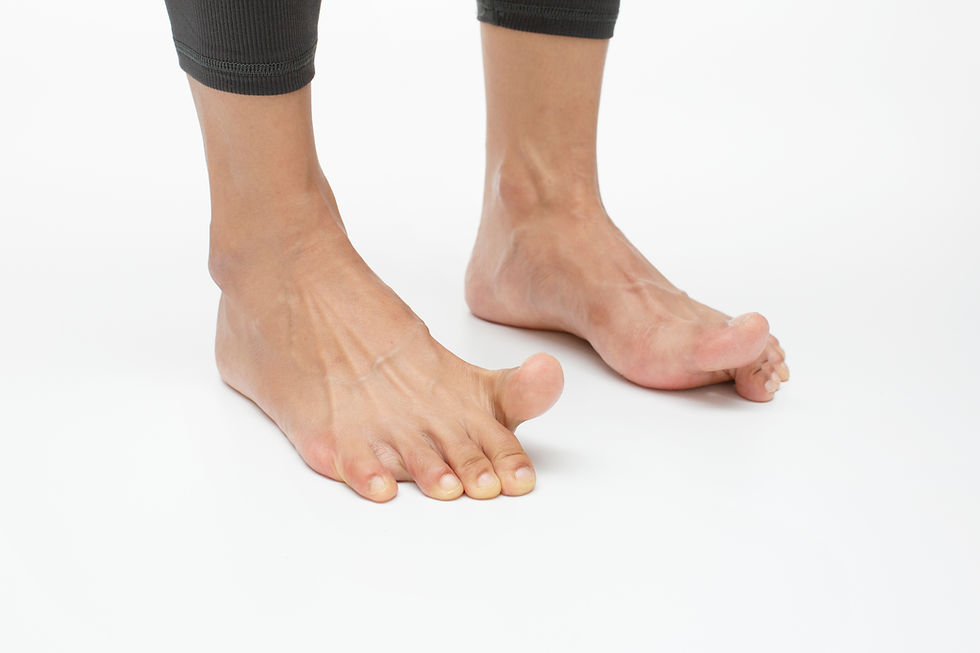Minimalist vs. Traditional Running Shoes: Do They Really Make a Difference for Your Core?” | Find Your Stride | Edinburgh Podiatrist
- Joshua Francois
- 1 day ago
- 2 min read
Introduction
A recent study titled “Effects of Minimalist vs. Traditional Running Shoes on Abdominal Lumbopelvic Muscle Activity in Women Running at Different Speeds” by García-Arrabé et al. (2024) dives into the minimalist vs traditional running shoe debate head first, but from a lesser-explored angle. Instead of focusing on foot-strike or running related injuries, the study hones in on the activity of core stabilisers like the internal oblique (IO), gluteus maximus (GM), and lumbar erector (LE) muscles in female runners.
And here’s the kicker; despite all the hype around minimalist shoes engaging more muscles and promoting “natural running,” this study didn’t find statistically significant differences in muscle activation between minimalist shoes (MS) and traditional shoes (TS) across different speeds.

Method - How they did it
Fifty-one healthy women ran on treadmills at 6, 9, and 11 km/h while wearing both types of shoes in a randomised crossover trial. Using surface EMG, researchers measured the electrical activity of the IO, GM, and LE muscles to see how each muscle responded to speed and footwear changes.
What they found:
Speed matters: Across the board, muscle activation increased with running speed, especially between 6 to 9 km/h.
Footwear? Not so much: Minimalist shoes showed slightly higher EMG readings, but the differences were not statistically significant.
Muscle disparities: The lumbar erector (LE) consistently showed lower activation than the gluteus maximus and internal oblique, regardless of shoe type or speed.
Strengths & Shortfalls
This study is commendable for focusing on an under-discussed area; how footwear may affect the proximal musculature (core and pelvis) rather than just the lower legs. Its cross-over design, EMG normalisation protocols, and attention to detail in sensor placement are strong points.
However, the short 90-second treadmill running bouts limit its real-world applicability. Most runners don’t lace up for a minute and a half jog. Also, participants were new to minimalist footwear, so any meaningful neuromuscular adaptations likely hadn’t had a chance to develop. It’s a bit like testing a manual transmission car with someone who’s only driven automatics for years and expecting them to showcase the benefits of stick shift driving in under two minutes.
So, What’s the Verdict for Runners?
If you’re hoping minimalist shoes will immediately fire up your core or transform your running posture, this study suggests tempering your expectations at least in the short term. While minimalist footwear may still offer long-term biomechanical or injury-prevention benefits, this research shows no instant core-activation magic trick.
For runners and coaches, the takeaway is clear: if you’re targeting abdomino-lumbopelvic strength, focus on speed and specific training, not just shoe choice. And if you’re transitioning to minimalist shoes, give your body the time it needs to adapt. This isn’t a sprint—it’s a marathon.
Find Your Stride!



Comments